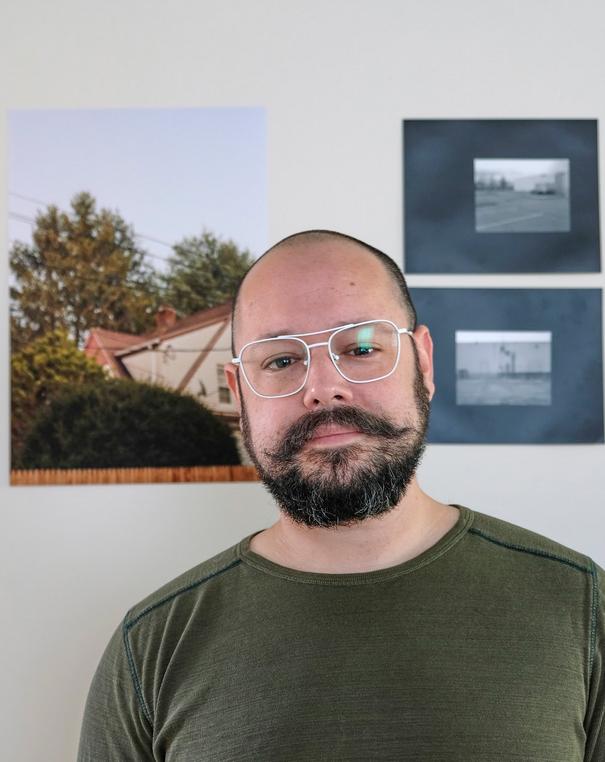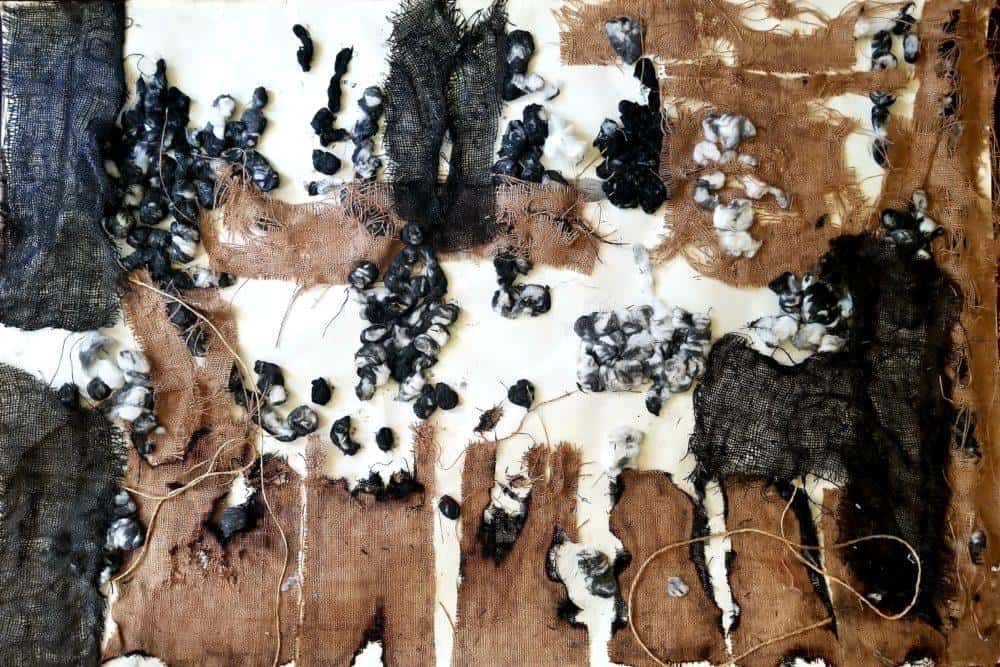Nate Lerner

Nate Lerner would often travel to make photographs that engage viewers’ capacity for meaning-making. He has spent the pandemic in the New Haven area bringing renewed attention to the neighborhoods in which he resides. The following is transcribed from an interview conducted by Annissa Carter over Zoom in December 2020 as a part of the Artists of New Haven program. Responses have been edited for content and clarity.
Tell me a little about yourself.
In terms of visual artmaking, I came to it very late. I did my undergrad in music. I realized early on that this wasn’t what I wanted to do professionally, but it gave me some really good foundations. I was a theory and composition major, so thinking about form and rhythm has influenced how I conceptualize visual art. I fell into the world of arts administration and later higher education, so for years I wasn’t doing a lot of creative work. It wasn’t until I had the opportunity to attend graduate school for free as a perk of [employment at] Wesleyan University that I began to return to creative work. I started taking photography courses with Marion Belanger, who is on the board of Artspace and is a phenomenal teacher and artist. I finished [the Master’s program] in 2017 which marked the start of me taking my art more seriously, so while I haven’t been doing it for all that long I’ve been doing it quite intensely.
It’s interesting that you’ve worked directly with one of our board members. Is that how you’re connected to Artspace?
It’s one of the ways I’m connected. I’m also close to Sarah Fritchey, who was curator at Artspace for many years. I was in an exhibition in 2019 called In Plain Sight/Site [curated by Niama Safia Sandy], I’ve been in City-Wide Open Studios, and I participated in the Flatfile before it was re-imagined.
How did you get involved in the Flatfile exhibit?
I initially applied several years ago and was accepted to participate. When Artspace re-imagined the Flatfile this year I applied again. It’s humbling to be selected with the 9 other artists who are incredibly talented.
There seems to be a lot of artists from all over participating in this exhibit, can you tell me a little more about where you’re from?
I live in Hamden. My wife and I are both from New England but we’ve lived all over the place. When we moved back [to the Northeast] we lived in New Haven for a couple years before we bought our house and now we’re about a five-minute walk from the New Haven line. We both love New Haven—it’s close to other cities, it’s small enough where you can make some real connections here, there’s a ton of culture and great food, and of course you have great, resources like Yale without [the city] being too expensive.
As a creative person, how have you come to adapt your creative process since the start of the pandemic? Has your art or creative process had to change much, if at all?
It’s been a hard transition for me and I didn’t expect it. Though studio work is a pretty solo, I work in lens-based media and a lot of what I do is walk around. I’ve learned to develop habits so I can do it [more deliberately] now, but so much of it was a natural part of life and travel. Travel is super important to my practice; it re-energizes me when I’m seeing new things. I always try to see existing things in new, fresh was and analyze them as such, but it’s a lot harder than going to a new place and having an initial take on it. Sometimes this can result in a shallower work but at least it’s a generative process when you’re engaged with the world. I’ve always wanted more time in the studio, but there needs to be a balance.
Going from traveling to having to hone your skills at home, how’ve you been dealing with that in general?
It has its ups and downs. I’ve been spending a lot of time with my archives, which is something that I’m usually a year behind on anyways. I’m working on a book that’s made up of images that I made while in residency at the Vermont Studio Center— at this time last year I was just coming home from that. I’m about halfway through that project – I need time to reflect, have some distance, and figure out what my work is about. I’m not someone who knows what their work is about in the beginning stages, it’s a continual process of discovery. I’ve been using a lot of time to make sense of those materials and work on sequencing. In terms of making new work, I’ve been going out on walks around my neighborhood with a lot more frequency than I was able to in the past. When I was commuting every day I didn’t have the opportunity to get up and go for a morning walk and notice how the light moves around during the day. It’s beautiful! My go-to spot for when I want to get out of the house is East Rock Park. That’s [one of the places I frequented] when I started making pictures, so it’s nice to revisit and see changes and have a more in-depth connection with the site. It’s been nice to go there during different seasons and see if my perspective of the same place has changed.
Can you tell me more about the art you’re bringing to Flatfile this time around?
All the pieces I’ve submitted, except for one, were made during the pandemic so they’re all sort of about life during quarantine. Part of why I love photography in particular is because it allows room for subjectivity—people bring their own meaning and have different takes on it no matter what the subject is. In general, they’ll pick up some of what I’m putting down, but they have their own life experiences and feelings that they bring to it. I try not to be super overt or explicit in my work, so if I didn’t say that “this work is about being in quarantine” then I’m not sure if that’s what anyone might get out of it, but that’s what it’s about for me. It’s about being at home, domesticities…there are a lot of images from the interior of my house and some from my garden and around my house. They’re also quiet images; I do a lot with flowers and plants and forest life. I’m obsessed with the way that forests are constantly rewriting themselves and all the abstractions that come out of that. There’s also the evidence of human activity, and what those things can say about our lives and ideologies.
Related Exhibitions

